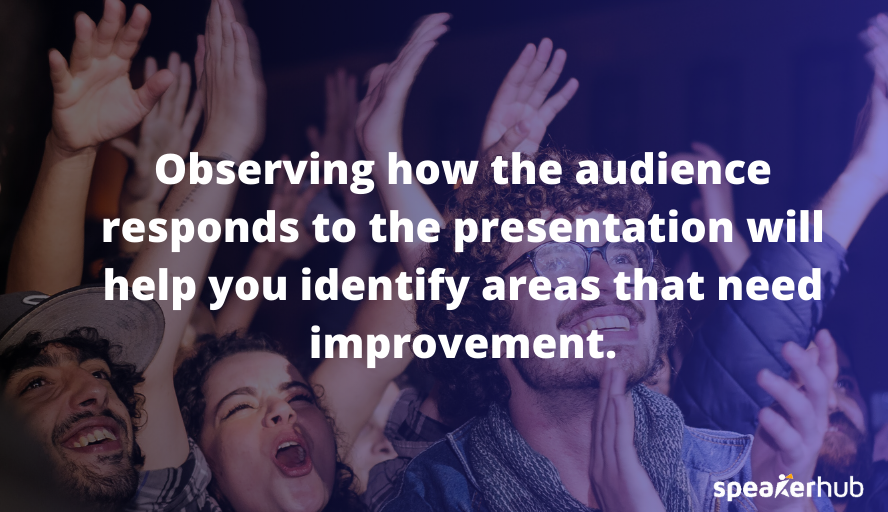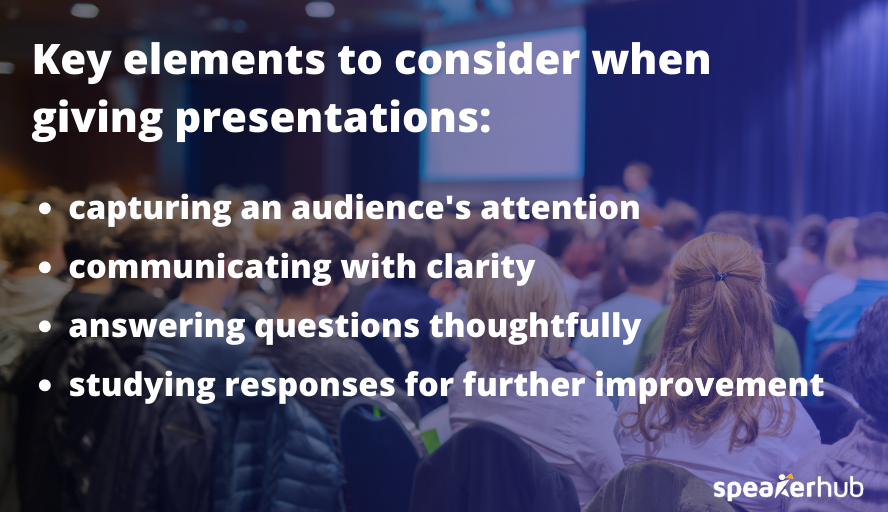Analyzing Audience Response: An Essential Skill for Effective Presenters

Presenting to an audience can be a daunting task. It’s been estimated that a staggering 75% of all people have at least some fear of public speaking. Chances are, a decent amount of presenters in a given situation feel some level of anxiety.
But what separates a solid presenter from a great one? It’s their ability to read the room, know their style, and adapt it to any audience. You need to be able to assess how your audience is responding and adjust accordingly.
By understanding this skill of analyzing audience response, presenters can better react effectively and make meaningful connections with their audiences, leading to more successful overall presentations.
Assessing Your Presentation Skills
Being able to estimate one's own presentation skills is a critical aspect of success for any presenter. It requires examining an audience’s response to the delivered material and how it was presented. Analyzing audience response is, therefore, essential for effective presenters.
By studying their presentation style and taking into account feedback from previous presentations, a presenter can identify areas where they are succeeding or struggling in delivery, organization, and content.
Let’s say you’re giving a presentation to college students, and you get feedback that your slides weren’t organized well and the content was too technical. By using that feedback, you should be able to determine what needs to change to better engage with your audience. You may need to revise the structure of your slides and use simpler language.
You can also ask for help from colleagues, or take a course to improve your presentation skills. Additionally, practice makes perfect – try delivering the same presentation multiple times to hone your skills and become more confident.

Observing how the audience responds to the presentation will help you identify areas that need improvement. You can also use surveys or polls to get direct feedback from your audience so you know what techniques are working and which ones need tweaking.
Overall, getting honest feedback is essential for improving your presentations, revising content and delivery so they’re more suitable for specific audiences.
Developing Your Presentation Style
As we’ve discussed, an essential skill for effective presenters is the ability to interpret audience response. This requires an understanding of how people respond differently according to their own personalities, backgrounds, and experiences. A key component of this analysis recognizes one's own presentation style.
Presentation styles can vary widely depending on the situation and the presenter’s purpose, ranging from a formal speech with slides or props to an informal discussion without visuals. It may also involve body language, tone of voice, choice of words and level of energy used in order to engage with the audience properly.
For instance, if you’re having a presentation at one of the top colleges in the country, your audience will likely expect a highly professional and polished presentation with strong visuals. On the other hand, presenting to a casual crowd of friends may require more lighthearted content with anecdotes or humor.

No matter the situation, understanding your personal presentation style can be an invaluable asset for any presenter. Take some time to reflect on how you come across when speaking publicly and what methods you can employ to better engage with your audience. This will help ensure that your message is received in an effective and meaningful way.
Key Elements of Effective Presentations

Presenting effectively is a skill that can be developed through practice and specific techniques. Key elements to consider when giving presentations include, capturing an audience's attention, communicating with clarity, answering questions thoughtfully, and studying responses for further improvement.
-
Understand The Audience
You need to understand your audience before giving the presentation. This includes researching their background and interests, as well as paying attention to body language, facial expressions, and questions during your talk.
In addition, this can provide valuable feedback for presenters about what topics need further explanation, which strategies are most successful in engaging the audience, and where they may have lost clarity or focus in their delivery. Thus, having an awareness of these insights can help them better tailor future presentations according to specific audiences’ needs and preferences.
Consequently, this capacity to interpret and respond appropriately to audience reactions has become an invaluable skill set for any public speaker seeking success in both professional and personal contexts.
-
Prepare The Content
Presenters need to prepare their content in advance to effectively engage an audience. And that includes researching the topic and ensuring all material is relevant to the listeners. It also requires assessing potential questions or issues during the presentation and determining how best to address them with the audience. In addition, any visual aids should be created before presenting, and tested so there will not be any unexpected delays due to technical difficulties.
Before beginning the presentation, the presenter must clearly understand what points they wish to convey. Understanding the relevance of each point made and why certain information needs to be shared is key to maintaining focus throughout the entire talk. Having an effective structure, such as using signposts, transitions, and summaries can help keep both presenter and the audience stay on track, while providing clarity at every step along the way.
Being able to anticipate possible reactions from various groups within an audience enables presenters to plan ahead accordingly and better connect with them through meaningful dialogue. Therefore, thorough preparation of content is essential for successful presentations.
-
Deliver With Confidence
Delivering a presentation is important to presenting and engaging with the audience. To do this effectively, confidence in delivery is key.
A confident presenter will be able to engage better with their audience, as well as make sure that they are comprehending the information being presented. Self-assurance can also help build trust in the presenter and the delivered content.
Understanding how to analyze an audience's responses can help presenters plan for different scenarios when delivering presentations. That knowledge enables them to adapt their approach quickly if needed, and adjust their tone or message depending on what kind of reaction they receive from those listening.
Speakers can ensure effective communication by scrutinizing responses during a presentation and addressing any issues or confusion immediately rather than waiting until the end of the section.
-
Control The Environment
The ability to analyze audience response effectively is essential for effective presenters. For this purpose, controlling the environment in which presentations take place can help greatly. That includes factors such as the physical space, temperature, lighting, and sound within the room or venue. Additionally, creating an atmosphere that encourages openness and allows questions from the audience should also be an aim.
In addition to managing the external environment, a presenter needs to pay attention to their audience's non-verbal cues while presenting. Things like body language, facial expression, and posture display how engaged people are with a presentation and provide valuable insights into how well received it is.
By keeping track of these signs throughout the event, presenters can adjust their delivery accordingly to tailor their message to what resonates best with the audience. With these tools, analyzing audience responses becomes much easier and more accurate.
Mastering Response Analysis to Become a Better Presenter
By being aware of these elements, presenters will better understand how their audience responds and adjust accordingly. Audience response analysis is necessary for producing an engaging yet informative presentation that resonates with listeners.






